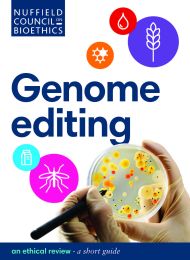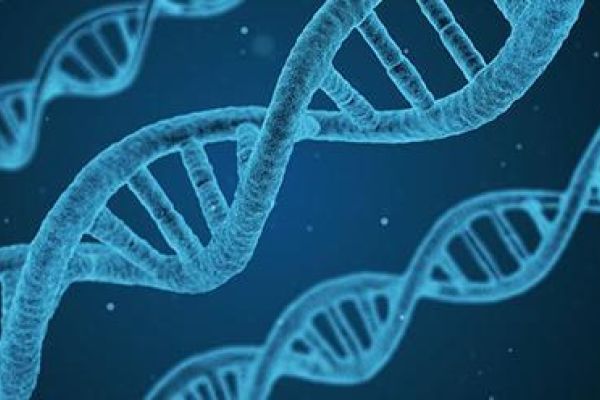Genome editing: an ethical review
Report
Published 30/09/2016

Genome editing is having a transformative effect in many areas of biological research. It is being taken up widely and has spread quickly due to the advantages it offers to those using it: it is affordable and easy to use; it gives faster results; it is efficient at making precise edits to DNA; and it offers the prospect of making these edits at multiple sites in the genome in a single procedure.
This review has identified some of the key issues and questions that may arise in relation to potential future uses of genome editing in treatments and technologies that could be applied in humans, animals, plants, and microorganisms. The ethical questions are very different, depending on the context of application. In view of this, we believe that focussing primarily on the ethical implications of the technology itself is not the best way to approach further appraisal of the ethical and social issues. Instead, we propose a second stage of work that starts by looking critically at problems or challenges that genome editing may contribute to addressing, and offer an ethical analysis of the ways of approaching them in which genome editing may play a role.
Next steps: what are the priorities?
The review has identified two priority areas which require urgent ethical consideration: human reproduction, and livestock. Accordingly, the Council will now set up two expert Working Parties to develop practical conclusions and recommendations in response to the issues and questions raised in this initial stage of the project. Their findings and recommendations will be reported in 2017.
The box below highlights further issues identified in the review that we believe need to be addressed in the near future, and issues that need to be kept under review.
Issues that should be addressed urgently
Human reproduction
Why?
Of all the potential applications of genome editing that have been discussed, the one that has consistently generated most controversy is the genetic alteration of human embryos in vitro. Research undoubtedly has a very long way to go before any application of this sort could be contemplated and, in the UK at least, the transfer of an edited embryo to a woman is currently prohibited by law. Nevertheless, such applications are theoretically possible and there are strong moral arguments for them, at least for limited purposes, as well as against. The principal challenges are the very difficult questions of what would be required to demonstrate safety and efficacy, and of resolving the ethical arguments for and against attempting it. It is therefore appropriate to consider carefully how to respond to this possibility before it becomes a practical choice.
Addressing these difficult questions now will help to meet concerns that technology is rushing ahead of public debate and allow such debate to influence the development of the technology, distinguish acceptable from unacceptable aims, and reduce the uncertainty and ambiguity for researchers and potential recipients of the technology.
Livestock
Why?
Genome editing offers a potential contribution to the challenge of maintaining a sufficient supply of safe, nutritious food. Research in this area is comparatively well advanced, but has received little attention compared to other uses of genome technologies.
There are important questions to consider regarding the appropriateness of existing regulations and whether there is a need for new classifications or new approaches to policy and regulation. The answers to these questions could have important consequences for food security, businesses, international trade and the economics of food production.
Issues that may need to be addressed in the near future
- The use of CRISPR-Cas9-enabled gene drive systems in wild species (not only insects) to prevent infectious disease transmission; and
- The use of genome editing to make animal tissues and cells suitable for transplantation to humans (xenotransplantation).
Issues that should be kept under review
- Genome editing to develop new cell-based therapies for existing diseases;
- The use of genome editing to develop new plant strains in agriculture;
- Changing patterns of technology use, including military and national security initiatives, artistic and cultural activities, and private experiments by community groups or individuals.

Share